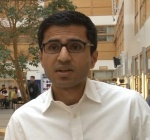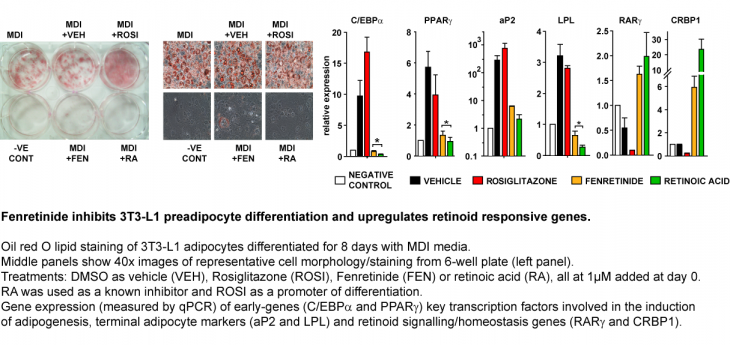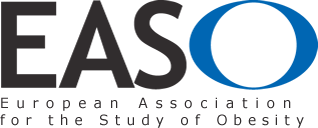
Ph.D. Biochemistry, B.Sc. Biochemistry,
Senior Lecturer
- About
-
- Email Address
- n.mody@abdn.ac.uk
- Telephone Number
- +44 (0)1224 437102
- Telephone Number
- +44 (0)1224 437411
- Office Address
Institute of Medical Sciences (room 5.27)
School of Medicine, Medical Sciences & Nutrition
Foresterhill Health Campus
Aberdeen AB25 2ZD
Scotland, UK- School/Department
- School of Medicine, Medical Sciences and Nutrition
Biography
Current position: Senior Lecturer - since Aug 2017.
Aberdeen Cardiovascular & Diabetes Centre,
School of Medicine, Medical Sciences & Nutrition and
Institute of Medical Sciences. (tenured Lecturer since Sept 2014).Research Fellow, Aug 2011 - Aug 2014. Cardiovascular research programme (Institute of Medical Sciences, since Aug 2012).

(Intermediate) Basic-Research Fellow
- University of Aberdeen, Sep 2009 - 2013Postdoctoral Research Fellow - University of Aberdeen, Sept 2007-Aug 2011
Working closely with Prof. John Speakman, Integrative Physiology, Institute of Biological & Environmental Sciences.Postdoctoral Research Fellow - Harvard Medical School, Nov 2003 - Jul 2007
Prof. Barbara Kahn's laboratory, Division of Endocrinology, Diabetes & Metabolism, Beth Israel Deaconess Medical Center, Boston, MA, USA.PhD - University of Dundee, MRC Protein Phosphorylation Unit Oct 1999 - Jul 2003. Specialising in cell signalling, protein phosphorylation of kinases (in particular the MKK5-ERK5 pathway). Supervisor : Prof. Sir Philip Cohen.
Qualifications
- PhD Biochemistry2003 - University of Dundee
- BSc Biochemistry1998 - University College LondonFirst Class Honours.
Memberships and Affiliations
- Internal Memberships
-
qPCR Facility Academic Lead and member of Core Facilities committee. Part of the IMS Technology Hub.
Previously.
Senate - Responsibility for the governance of the University which rests with the University Court and the Senatus Academicus (Senate). The Senate is responsible for the regulation and superintendence of teaching and for the promotion of research.
Athena SWAN award (for the University of Aberdeen) Self-Assessment Team member. The Athena SWAN Charter recognises and celebrates good employment practice for women working in science, engineering and technology (SET) in higher education and research.
- External Memberships
-
Associate Editor, BMC Endocrine Disorders
Peer reviewer for Scientific Reports, Biochemical Pharmacology, Diabetologia, The Journal of Clinical Endocrinology & Metabolism (JCEM).
Publons verified peer review database
- Research
-
Research Overview
Physiological and molecular link between obesity and insulin resistance and the development of cardiometabolic co-morbidities in mouse and cell models
We are studying the interplay between genetic background and environmental challenges that lead to the development of obesity and insulin resistance and the development of cardio-metabolic co-morbidities of type 2 diabetes, cardiovascular disease and metabolic-dysfunction associated steatotic liver disease (MASLD). Understanding the signalling pathways that are impaired in disease can help us to identify new drug targets and experimental drugs to combat cardio-metabolic diseases.
Current Research
Super happy to share our new preprint on MASLD and Hsd17b13.
https://www.biorxiv.org/content/10.1101/2024.02.27.582262v2
Grateful for the work of PhD student Shehroz Mahmood, PhD (now graduate), RNA-seq project of former PhD student Nicola Morrice , postdoc work of Dawn Thompson and great collaborators Dr George D. Mcilroy, Justin Rochford, Phil Whitfield, Sara Milanizadeh PhD, Sophie Wilson. We show that direct, liver-specific, shRNA-mediated knockdown of Hsd17b13 in high-fat diet-obese mice, markedly improved hepatic steatosis with no effect on body weight, adiposity or glycaemia. This was our lead project following our RNA-seq analysis of steatotic liver from obese mice -/+ Fenretinide treatment, which identified major beneficial effects of Fenretinide on hepatic gene expression including Hsd17b13. Lipidomic analysis of liver tissue revealed changes in phosphatidylcholines containing polyunsaturated fatty acids (PUFA) e.g. PC 34:3 and PC 42:10 suggesting a potential mechanism of Hsd17b13 biological function and role in MASLD. Should be of interest to number of companies targetting Hsd17b13 with RNAi approaches eg. Alnylam Pharmaceuticals.
Also:
A short article on our latest research @LinkedIn - Fenretinide inhibits obesity and fatty liver disease but induces Smpd3 to increase serum ceramides and worsen atherosclerosis in LDLR-/- mice. Funded by the @TheBHF. Now out @ nature.com/scientificreports https://rdcu.be/c7dQw
Past Research
Long-standing research interests.
- Investigating how our bodies adapt to changing food intake in terms of accumulating fat and controlling blood glucose levels.
- Understanding how increasing amounts of fat and high blood glucose levels leads to changes in protein levels and has effects on the DNA in cells that make up fat, liver and muscle.
- Increasing our knowledge of how these integrated pathways (from DNA to the whole body) that are no longer controlled well in disease, can help us to identify new drug targets to combat obesity and type-2 diabetes.
Obesity levels are rising worldwide to epidemic levels and this is of major concern to governments and health services, because obesity is often accompanied by serious co-morbidities such as type 2 diabetes and cardiovascular disease. With a concurrent rise in the incidence of type 2 diabetes and with around 80% of people being overweight at the time of diagnosis, obesity has been identified as the number one risk factor for the development of type 2 diabetes. Type 2 diabetes develops from insulin resistance, which is characterised by impaired insulin action in skeletal muscle, adipose tissue and liver. Over the past 15 years it has become apparent that adipose tissue acts as an endocrine organ secreting many factors (adipokines), some of which have been directly implicated in the development of insulin resistance and diabetes. One such factor recently identified is the serum retinol-binding protein (Yang Q, Graham TE, Mody N, others and Kahn BB. Nature 2005, now cited over 1000 times).
Understanding the signalling pathways that are impaired in disease can help us to identify new drug targets to combat obesity and type-2 diabetes.
What is diabetes? - Great animation @ Diabetes UK.
Diabetes and the heart - information and video at British Heart Foundation.
Understanding animal research - The public debate on animal research sometimes gets so heated that the facts can be overlooked. Learn more at this site.
We are currently interested in the way the body uses vitamin A (or retinol).

Our current research was highlighted by the Mail on Sunday (6 Jan 2013, page 13) as the ‘Magic bullet’ hope for battling obesity - Drug could prevent weight gain from junk food. Click here to read more, but scroll down the page to find the article.
Mice fed high-fat diet rapidly undergo many molecular and physiological changes such as gain adipose (fat) mass and become insulin resistant. Prolonged exposure to a high-fat diet leads to full blown obesity, severe insulin resistance, hyperglycemia and diabetes. My research aims to provide further insight into the mechanism of diet-induced obesity and insulin resistance and identify novel molecular target(s) for the development of new, more potent therapies to treat obesity and prevent diabetes.
Retinol homeostasis is tightly regulated by a complex system of enzymes and carriers that can promote the 1) storage of retinol in the form of retinyl-esters (RBP4, cellular RBP1, CRBP1 and lecithin:retinol acyltransferase, LRAT), 2) metabolism to retinoic acid (RA) and signalling through its receptors (retinaldehyde dehydrogenase, RALDH1, cellular retinoic acid-binding protein, CRABP and RA receptors, RAR’s), 3) degradation via cytochrome P450 type enzymes, CYP26A1. It has long been known that RA potently blocks adipogenesis when introduced at early stages of differentiation. More recently, the importance of retinoid homeostasis in whole body energy balance and glucose homeostasis has been highlighted in genetic knockout studies of RALDH1 (lean phenotype), CRBP1 and CRABP1 (obese phenotype). We are investigating roles of these proteins in different tissues and using retinoids to investigate signalling pathways altered in obesity and insulin resistance.
Key reference: McIlroy, GD., Delibegovic, M., Owen, C., Stoney, PN., Shearer, KD., McCaffery, PJA. & Mody, N. . 'Fenretinide Treatment Prevents Diet-Induced Obesity in Association With Major Alterations in Retinoid Homeostatic Gene Expression in Adipose, Liver and Hypothalamus'. Diabetes, 2013 Mar, vol 62, no. 3, pp. 825-836. [Online, 27 Nov 2012] DOI: 10.2337/db12-0458


Molecular approaches: we are using the latest and best high-resolution chemiluminescence digital imaging for western blotting to measure protein expression and insulin signalling changes. We also use real-time PCR to monitor gene expression changes.
Collaborations

We have a joint-lab structure with Prof. Mirela Delibegovic (IMS) - her main interest is the role of protein tyrosine phosphatase 1B (PTP1B) in cell signalling, obesity and diabetes. Juliana Luchin (2nd from left) was a visiting medical student from Brazil (July 2013). She performed western blotting on mouse tissue lysates from our high-fat diet studies during her 4 week stay in our lab. - Glucose and lipid homeostasis - Prof. Mirela Delibegovic
- Retinoic acid signalling in the CNS - Prof. Peter McCaffery
- Mouse models of Alzheimer's disease - Prof. Bettina Platt
- Prof. Lora Heisler, and Dr. Justin Rochford recently joined us from the University of Cambridge, School of Biological Sciences
- Caloric restriction to promote healthy ageing - Prof. Colin Selman (now Uni. of Glasgow)
Cross-college interactions with researchers at the Institute of Biological & Environmental Sciences eg. Energetics research (Prof. John Speakman) and the Rowett Institute of Nutrition & Health eg. Obesity and Metabolic Health Theme (Prof. Julian Mercer, Prof. Peter Morgan and Dr. Perry Barrett).
See the College of Life Sciences and Medicine website.
Invited speakers for recent obesity and diabetes seminars
2015
- Prof. Susanne Mandrup, University of Southern Denmark.
- Dr. Rob Semple, University of Cambridge.
- Prof. Nik Morton, University of Edinburgh, Centre for Cardiovascular Science
- Dr Zoi Michailidou, University of Edinburgh, Centre for Cardiovascular Science
Supervision
Most recently (Feb 2022), Shehroz Mahmood completed his PhD on 'Investigating novel approaches and genes to treat fatty liver disease associated with high-fat diet induced obesity'. Shehroz is my 3rd PhD student as lead supervisor. LinkedIn post
Summary of previous highlights LinkedIn post
Funding and Grants
Wellcome Trust - Institutional Strategic Seed Fund, ISSF (2020-2021 extended to 2022)
British Heart Foundation - project grant (2017-2020 extended to 2021), principle investigator leading a Scotland-wide collaborative grant with chemist Matteo Zanda (Aberdeen), vascular biology expert Patrick Hadoke (Edinburgh), lipid analysis specialists (Phil Whitfield and Mary Docherty in Inverness). Investigating new drugs to prevent lipotoxicity, insulin resistance and vascular endothelial dysfunction.
Wellcome Trust - Institutional Strategic Seed Fund, ISSF, (2015-2016)
Tenovus Scotland project grant (2015-2016), principle investigator. Genome-wide binding studies to interrogate retinoic acid receptor signalling in models of obesity and type 2 diabetes.
The Royal Society (of London) research grant 2013-2014, principle investigator.
Tenovus Scotland project grant (2013-2014) co-investigator (with Dr. Mirela Delibegovic)
Kosterlitz Centre for Therepeutics project grant (2013-2014) co-investigator (with Prof. Bettina Platt and Dr. Mirela Delibegovic)
British Heart Foundation Intermediate Basic Science Research Fellowship (2009-2013)
EFSD/Lilly European Diabetes Research Programme Grant (2012 - 2013) Principal Investigator (co-PI with Dr. Mirela Delibegovic)
Tenovus Scotland - small research grant (2011), Mathematical Understanding of Obesity and Type 2 Diabetes in mouse models. In collaboration with Scottish Crucible participant Liangxui Han (now School of Computing, Mathematics and Digital Technology, University of Manchester).
Scottish Crucible Interdisciplinary Group Project Award
2013 Space to Pace: making Scottish green space accessible
2010
1. Using optoelectronic tweezers on cells to measure biomarkers of ageing and obesity;
2. Using a novel method to prepare of food emulsions.The Biochemical Society Summer Vacation Studentship - awarded to Petros Stathakos (University of Aberdeen undergraduate student).


European Association for the Study of Obesity (EASO) Travel Award (2009) to attend the European Congress on Obesity (ECO) 2009, 6th - 9th May, Amsterdam.
Career Development Fellowship (2007-09)
College of Life Sciences & Medicine, University of Aberdeen.Trans-Atlantic Postdoctoral Fellowship (2006-07)
American Diabetes Association - European Association for Study of Diabetes.
Postdoctoral Fellowship (2004-06)
American Heart Association (Northeast Affiliate). - Teaching
-
Programmes
- Postgraduate, 3 stage, September start
Courses
Coordinator
Coordinator
Teaching Responsibilities
Laboratory-based research-led teaching. Final year (Honours) students take projects in our current areas of research. Including 20-week research projects for medical students performing Intercalated BSc in Medical Sciences (for details see tab on "Further Info" and scroll down to "BSc Hons students").
I am a Lecturer on:
- BC3503 - The Molecular Control of Cell Function. 3rd year course, I cover aspects of metabolic disease, insulin and nutrient signalling.
- BI25M7 - Energy for Life. 2nd year Biochemistry course, I give tutorials aimed at recapping and discussing taught material about metabolism and enzymes.
- BI2508 - Principles of Animal Physiology, - 2nd year course for Zoology students.
- BI1006 - 1st year Biology tutorial course, tutor.
- Publications
-
Page 3 of 3 Results 51 to 55 of 55
The Adipokine Lipocalin 2 Is Regulated by Obesity and Promotes Insulin Resistance
Diabetes, vol. 56, no. 10, pp. 2533-2540Contributions to Journals: Articles- [ONLINE] DOI: https://doi.org/10.2337/db07-0007
Serum retinol binding protein 4 contributes to insulin resistance in obesity and type 2 diabetes
Nature, vol. 436, no. 7049, pp. 356-62Contributions to Journals: Articles- [ONLINE] DOI: https://doi.org/10.1038/nature03711
An analysis of the phosphorylation and activation of extracellular-signal-regulated protein kinase 5 (ERK5) by mitogen-activated protein kinase kinase 5 (MKK5) in vitro
Biochemical Journal, vol. 372, no. 2, pp. 567-575Contributions to Journals: Articles- [ONLINE] DOI: https://doi.org/10.1042/BJ20030193
Effects of MAP kinase cascade inhibitors on the MKK5/ERK5 pathway
FEBS Letters, vol. 502, no. 1-2, pp. 21-24Contributions to Journals: ArticlesInhibition of N-linked glycosylation of the human type 1alpha metabotropic glutamate receptor by tunicamycin: effects on cell-surface receptor expression and function
Neuropharmacology, vol. 38, no. 10, pp. 1485-1492Contributions to Journals: Articles- [ONLINE] DOI: https://doi.org/10.1016/S0028-3908(99)00099-4
